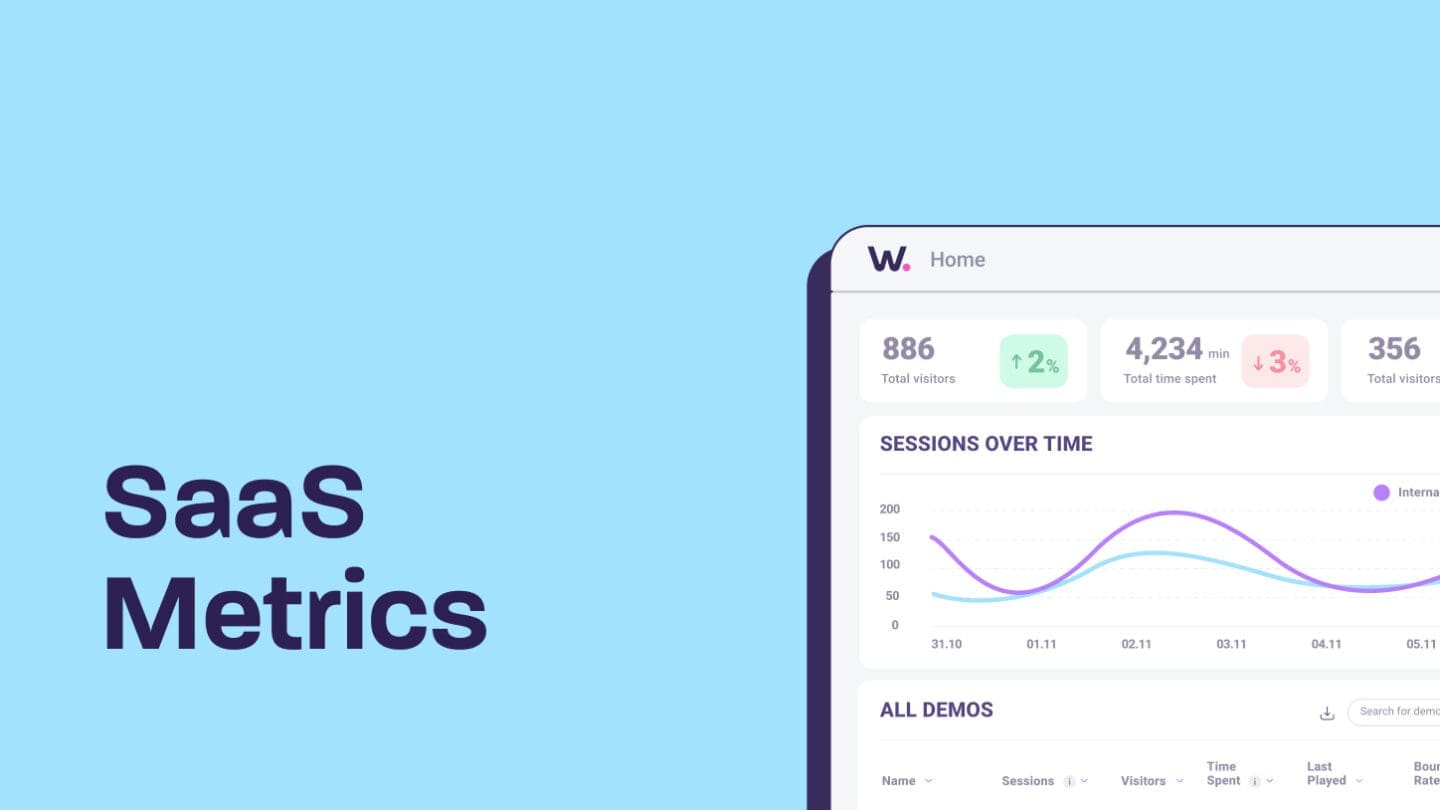If you were used to building garden fences but decided to build the Great Wall of China by the end of Q4, the first thing you’d set out to do was make sure you acquired all the equipment and hired all the workers you needed to get the job done.
To do that, you’ll first need to understand your current building capacity.
Now imagine your sales team’s goal is to bring in $5 million in revenue by the end of Q4. To accomplish this, you would probably also need to make sure you had all the tools and staff necessary to achieve this goal.
But how can you possibly know what you’ll need?!
Great question, anonymous reader of our blog. There’s no need to panic. As always, we’re here for you.
To determine what you’ll need to accomplish your goals, you’ll need to take a page out of the playbook of the most successful companies. In SaaS sales, this means you’ll need a sales capacity plan.
- What is a sales capacity plan?
- Why do you need a sales capacity plan?
- The main objective of sales capacity planning
- Why using sales capacity planning is crucial in SaaS sales
- Create a sales capacity plan for your SaaS company in 3 simple steps
- Step 1: Understand your team structure
- Step 2: Determine your average deal size
- Step 3: Make quota and ramp assumptions
- Boost your sales capacity with the right tools
What is a sales capacity plan?
A sales capacity plan allows you to estimate the number and type of sales reps and the resources you’ll need to meet your revenue goals.
For example, if you want to get to $5 million in revenue in the next 12 months, a sales capacity plan would reverse-engineer the exact number of reps (AEs, BDRs, SDRs, etc.) and the resources they need to hit the number based on your past sales data.
To create a sales capacity plan you need a financial model (usually made in Excel or Google Sheets) to help you estimate or plan your top-line revenue based on the capacity and performance of your sales team. Use your past sales data (how much revenue each type of sales rep brings in per month, year, or quarter) to create a financial model that’ll allow you to hit your future sales targets. By building a forward-looking plan using historical data, you know exactly which positions to hire, and when.
Why do you need a sales capacity plan?
Most companies know the goal they want to achieve, but they fail to implement the steps to meet it. While you need an ambitious top-line, you also need a sales capacity plan if you want to get there.
The main objective of sales capacity planning
The aim of sales capacity planning is to understand how to expand your sales team to meet your revenue goals. It aims to take the guesswork out of sales to create a predictable, repeatable model for hitting your sales targets.
Why using sales capacity planning is crucial in SaaS sales
Sales capacity planning allows you to quantify the expected sales performance of your team. If the maximum possible revenue using your current team is not enough to hit the top-line revenue goal, you need to find ways to increase the capacity via sales enablement or increase your team’s size.
But not only does capacity planning allow you to plan your top-line goals, it also offers transparency into the team’s skills, availability, and performance. It ensures that sales teams deliver on time and within budget.
Capacity planning enables you to:
- Plan resources and use them cost-effectively
- Identify cost-saving and efficient ways to meet resource and tech requirements
- Provide data-driven insights about when and who to hire, ensuring you fill talent gaps correctly
- Ensure the team possesses the skills to deliver on your strategic and business initiatives
Create a sales capacity plan for your SaaS company in 3 simple steps
Capacity planning will save you money and help you plan your resources effectively. Let’s look at the three main steps required to schedule your sales capacity successfully.
Step 1: Understand your team structure
Every sales team is unique and has different roles. This means that as you plan your sales capacity, you should ensure you break down the various roles, including each role’s responsibilities, skills, and salaries, among others.
When you identify and analyze your current sales team’s structure, you can also find any gaps in your headcount, determine the deals needed to hit the desired quote, and quantify the deal size for each role.
This process makes quantifying how many prospects you need to convert to meet your target easier than ever before. Focusing on the ROI associated with each team member can help you reach your target revenue.
What you should do now:
Use your HRIS software to understand your sales rep data. Here are some things to find out:
- How many sales reps do you have?
- What type of sales reps they are?
- How long they have been with the company?
- What verticals or departments do they work in?
Step 2: Determine your average deal size
Determining your average deal size is important in your sales capacity planning.
Yes, we know, what makes sense is that senior roles complete the highest-value deals. But does this mean you should only focus on these high-end managerial positions? Of course not. The reason for this is that when planning sales capacity, you need to assign average deal sizes to every role you’re going to hire for.
Depending on the role, each team member will have an increased sense of responsibility and value, becoming more productive, which justifies salary differences between different roles.
You should also calculate how many deals are needed to meet the quota from each role and inform the number of new hires required to meet revenue goals.
To calculate the average deal size, you have to determine the closed deals and sort them into groups based on the sales rep who closed them. Once you do so, just divide the total deal value by the number of deals to find the average deal size.
What you should do now:
Use your CRM to find out historical sales data. Find out the following data points for each type of sales rep:
- How many sales have been made over the last period (e.g., 12 months)?
- What size have the deals been?
- How long did the sales take?
- How many stages did the deals go through in the CRM?
- How long did each stage take?
- What is the demographic of the companies won?
- What are the demographics of the companies lost?
- How many sales were lost?
Step 3: Make quota and ramp assumptions
Now that you understand your current sales headcount and your past sales data, you need to tie this into your target revenue and create the financial plan to hit your goal.
First, identify your quota, which is your team’s projected revenue (for example, in 12 months, the quota target is $5 million). Then, using the data from steps one and two, create the plan for the sales team to meet it.
Here is when it gets a little tricky. As all sales reps have different roles, markets, verticals, and company experience, your sales capacity plan needs to make some assumptions about their performance.
You can’t expect new hires to be as successful as their more experienced peers. So, you have to calculate ramp, too; the time needed for new employees to start meeting revenue goals.
When you calculate ramp, keep in mind onboarding time, sales cycle length, and the typical time-to-quote for your team members. After you consider ramp in your capacity planning, you’re guaranteed a more thorough understanding of what is needed to meet your targets.
You also need to use past data, such as marketing campaign performance, average deal size, product launches, close ratios, and average deals per month, based upon the type of rep.
When you determine the quota for each role, you need to compare it against your future revenue goals. To reach them, you may have to onboard new people.
What you should do now:
Using the CRM and HRIS data, you can now make assumptions about performance. Calculate the following metrics:
- How many sales does each type of rep make in a specific timeframe?
- What is the ramp time for new employees?
- How many agents do you need to hit the top-line goal?
- What is the cost for each type of sales rep?
Boost your sales capacity with the right tools
If you follow the steps above, sales capacity planning will help you to take the guesswork out of estimating future sales and growth. You can create a realistic hiring plan to meet your top-line goals using educated assumptions and historical data.
But if you want to get more out of your sales team, nail your targets, and have a successful year, arm your sales team with the tools they need to smash their sales quotas time after time.
Walnut is a sales experience platform that empowers sales reps by allowing them to create interactive and personalized product demos. These can be shared with your prospects early in the sales process so that prospects can see your product for themselves from the start.
Optimizing your demo process will allow your team to speed up your sales process, so you can increase their capacity. Not only will it boost your sales, but the platform can also be used to make the customer onboarding process more engaging. By creating product tutorials you’ll be able to reduce churn.
What’s more, the built-in analytics offer data-driven insights into what has worked on the demos, meaning you can improve your pitch, shrink sales cycles, and close more deals.
So what are you waiting for? Book a meeting with us now by clicking that “Get Started” button on the top of the screen.



